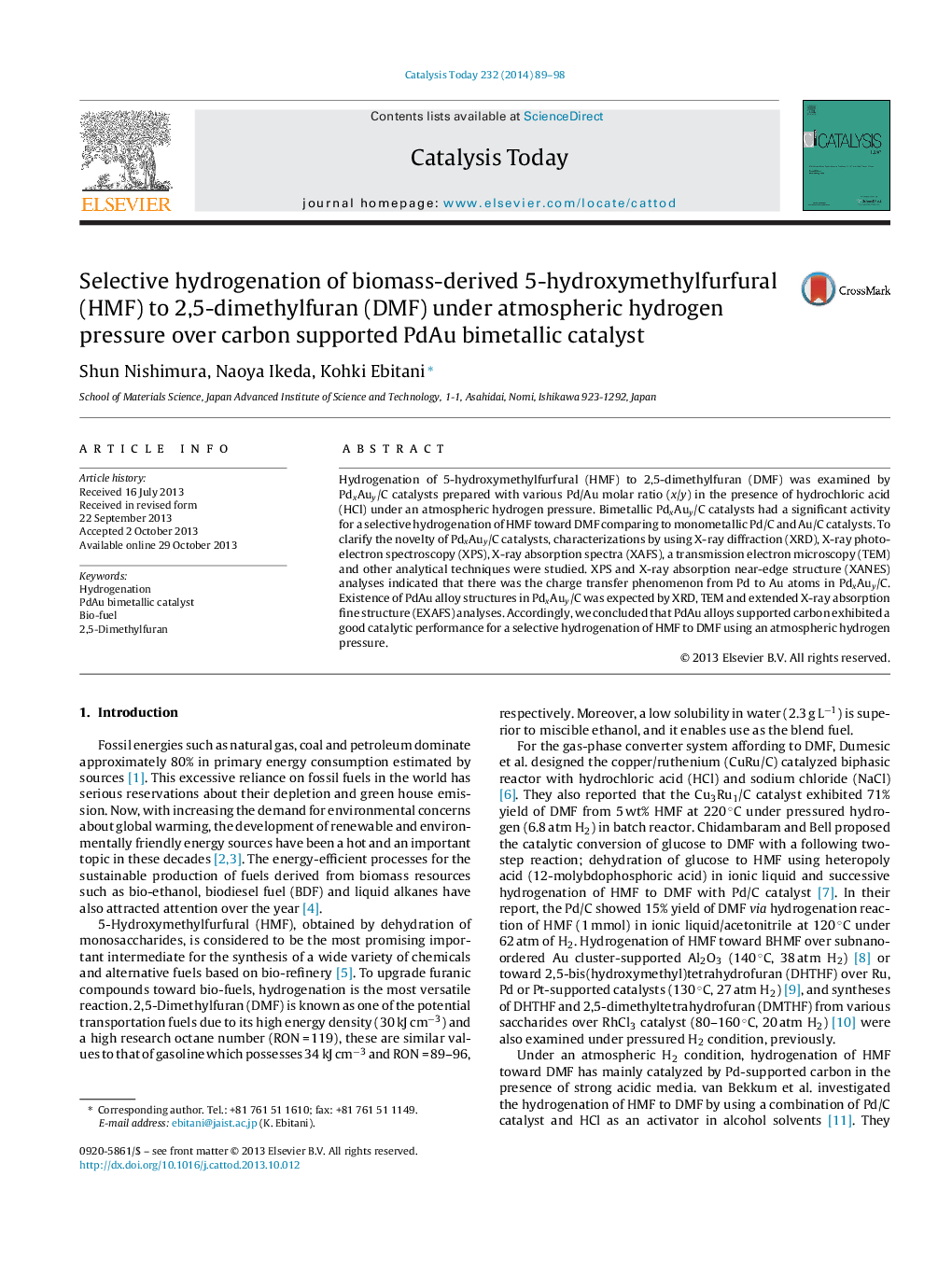| Article ID | Journal | Published Year | Pages | File Type |
|---|---|---|---|---|
| 54460 | Catalysis Today | 2014 | 10 Pages |
•Bimetallic PdAu/C exhibited a significant activity for selective hydrogenation of HMF toward DMF under an atmospheric H2 pressure.•Textural and electronic properties of the PdxAuy/C indicated PdAu alloys formed on carbon were contributed to the formation of the novel active site.•The PdAu/C also performed the direct synthesis of DMF from ketoses such as fructose and tagatose.
Hydrogenation of 5-hydroxymethylfurfural (HMF) to 2,5-dimethylfuran (DMF) was examined by PdxAuy/C catalysts prepared with various Pd/Au molar ratio (x/y) in the presence of hydrochloric acid (HCl) under an atmospheric hydrogen pressure. Bimetallic PdxAuy/C catalysts had a significant activity for a selective hydrogenation of HMF toward DMF comparing to monometallic Pd/C and Au/C catalysts. To clarify the novelty of PdxAuy/C catalysts, characterizations by using X-ray diffraction (XRD), X-ray photoelectron spectroscopy (XPS), X-ray absorption spectra (XAFS), a transmission electron microscopy (TEM) and other analytical techniques were studied. XPS and X-ray absorption near-edge structure (XANES) analyses indicated that there was the charge transfer phenomenon from Pd to Au atoms in PdxAuy/C. Existence of PdAu alloy structures in PdxAuy/C was expected by XRD, TEM and extended X-ray absorption fine structure (EXAFS) analyses. Accordingly, we concluded that PdAu alloys supported carbon exhibited a good catalytic performance for a selective hydrogenation of HMF to DMF using an atmospheric hydrogen pressure.
Graphical abstractFigure optionsDownload full-size imageDownload high-quality image (247 K)Download as PowerPoint slide
